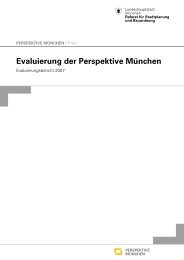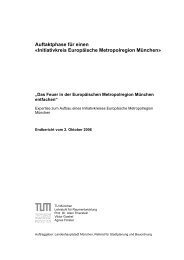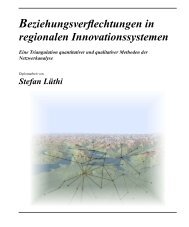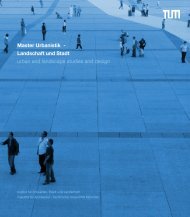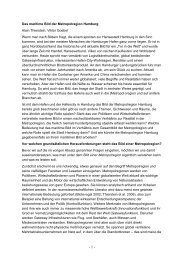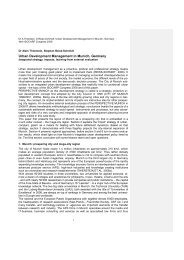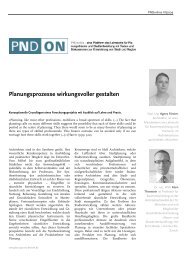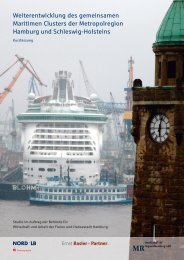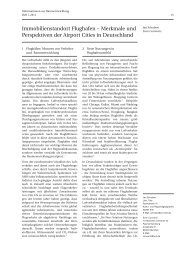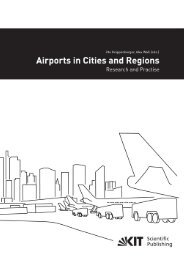0.6-1-Cover and Table of Contents-pp 0-05.indd - Raumentwicklung ...
0.6-1-Cover and Table of Contents-pp 0-05.indd - Raumentwicklung ...
0.6-1-Cover and Table of Contents-pp 0-05.indd - Raumentwicklung ...
Create successful ePaper yourself
Turn your PDF publications into a flip-book with our unique Google optimized e-Paper software.
MAHMOUD REZA SAGHAFI, JILL FRANZ, AND PHILIP CROWTHER<br />
Perceptions <strong>of</strong> Physical versus Virtual Design Studio Education<br />
Figure 3: Left; physical design studio, QUT, 2010. Right; virtual design studio, QUT, 2010 (Source: Authors).<br />
Exhibition style assessment in the Traditional<br />
Design Studio: where both students <strong>and</strong> staff<br />
are requested to evaluate the student work.<br />
Being able to see work in a full spread is more<br />
a<strong>pp</strong>ropriate for comparative marking. You are<br />
able to step back or look closely at the work.<br />
There is also that real time tactility that you won’t<br />
perceive online.<br />
The need for the assessment has spatial as well<br />
as technological implications. Students need<br />
ample space for mounting <strong>and</strong> displaying hard<br />
copy works <strong>and</strong> ample room for groups to view<br />
the works. In contrary, web 2 provides reviewing<br />
the design process <strong>of</strong> students’ works facilitates<br />
focusing on the process rather than on the final<br />
product without need to any physical space.<br />
7. Content<br />
This element relates to what is learnt <strong>and</strong> the<br />
knowledge <strong>and</strong> resources informing the learning.<br />
Responding to a question about comparing printed<br />
<strong>and</strong> online content, many participants prefer online<br />
materials as they are quick <strong>and</strong> easy to access.<br />
Online materials provide more facilities such as<br />
simultaneous access from anywhere, searchable<br />
texts, <strong>and</strong> detailed information. Generally, online<br />
materials provide more potential for students, but<br />
these “types <strong>of</strong> books cannot be found in online<br />
resources”. This could be addressed through the<br />
provision <strong>of</strong> a “studio library”. A student believes<br />
that ‘weaknesses <strong>of</strong> resources <strong>and</strong> availability <strong>of</strong><br />
materials’ is the main limitation <strong>of</strong> design studio.<br />
8. Process<br />
The development <strong>of</strong> a project is achieved through<br />
several design stages <strong>and</strong> related activities which<br />
can be defined as the process. Whatever the<br />
definition <strong>of</strong> ‘design process’, a comparison <strong>of</strong><br />
the activities in virtual <strong>and</strong> physical modes can<br />
lead to finding the a<strong>pp</strong>ropriate environment for<br />
each <strong>of</strong> these stages. However, there are some<br />
activities, such as sketching, that are hard to<br />
achieve in VDS. As an educator argues, if students<br />
attend physically, in-person interaction between<br />
tutor <strong>and</strong> students is possible:<br />
Archnet-IJAR, International Journal <strong>of</strong> Architectural Research - Volume 6 - Issue 1 - March 2012<br />
13



